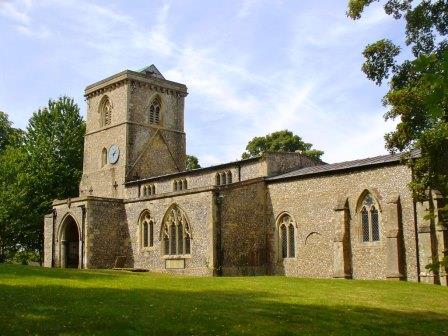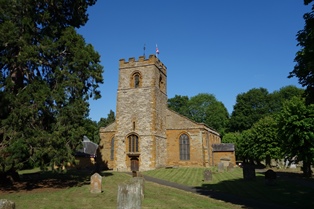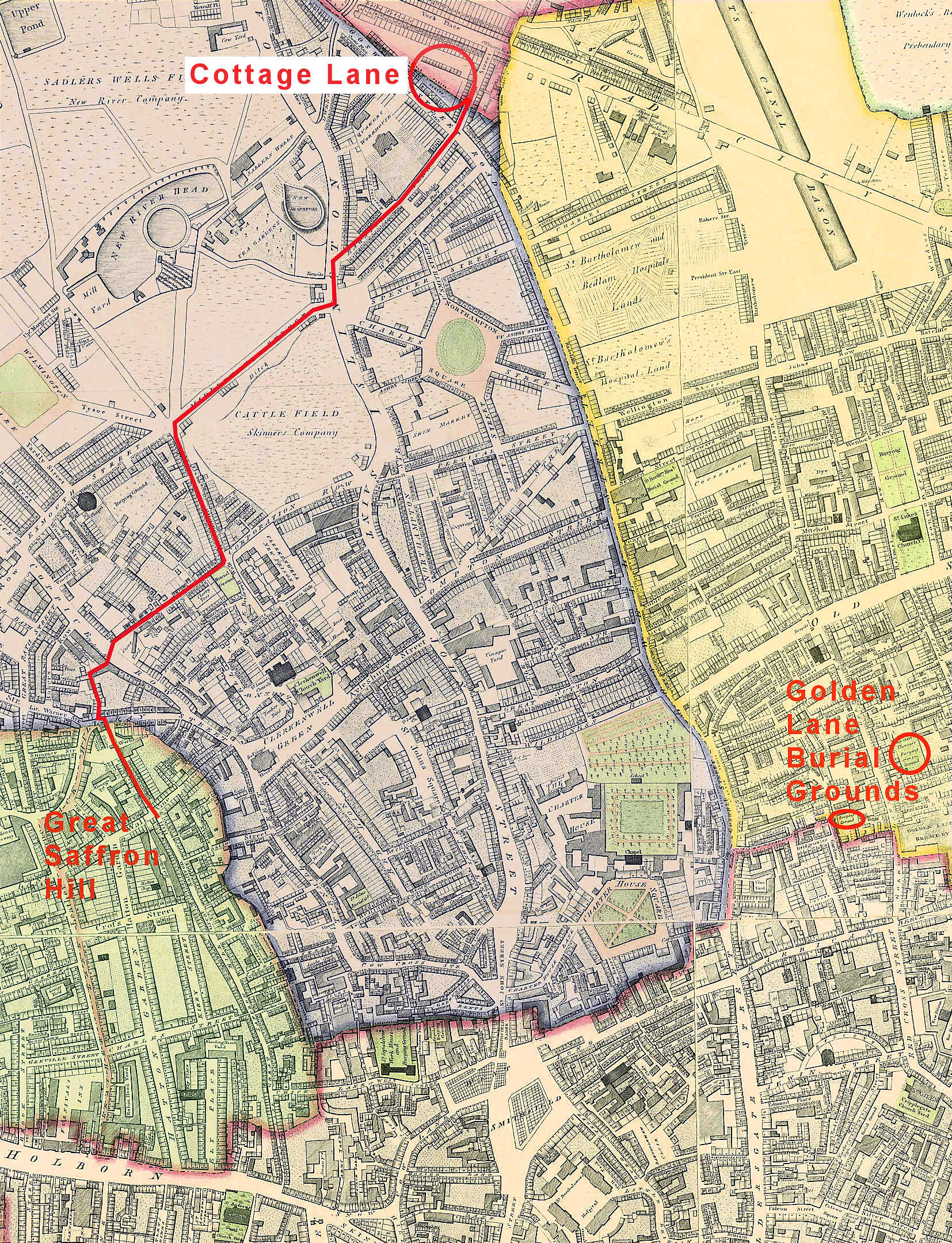Bledlow |
Woolwich |
Weedon Bec |
Hatchment |
London |
Caleb Irving is Teresa's great great great great grandfather. He was born in Buckinghamshire and worked as a coachpainter in Woolwich and Northamptonshire. He died in 1840, aged 59, in London and was buried there.
 Bledlow Church |
|
"An ordnance depot at Weedon Bec was authorised by an Act of Parliament in 1803. This was mainly built between 1804 and 1816. It was built for the Board of Ordnance to provide a secure inland store for gunpowder, firearms and other military stores. These could be transported by the nearby Grand Junction Canal. The original buildings included eight storehouses, four magazines, two lodges, accommodation for the Board's officials and a canal basin." Historic England
The size of the depot and the quantity of armaments held there would have created enough work to keep more than one painter busy and Caleb would have been part of a team. From the signed hatchment in Weedon Bec Church, explained below, it is probable that Caleb was a skilled coachpainter as well as a jobbing painter. A coachpainter painted more than just coaches; he applied decorative work to many items such as gun carriages, carts, boxes and furniture. Caleb would also have been working on repairs and improvements to objects that had been damaged.
The location of the paint shop may be indicated by the sign over the door of the small annexe attached to Building 7 (see the star on the image above). The present occupier, Deborah Mingham, has kindly provided an image of the door and the sign above it, and adds this description: "My unit is the annexe attached to Building 7 with the door at the rear, opposite the entrance to Building 14. The windows all have grills inside but the actual windows are on a hinge to open at the half way point on a swivel; this was for ventilation, I have always assumed. The unit has 7 windows and 2 high up round windows that also open up on sash cords, or at least, they did. I wouldn't try now as they are not strong enough. There is also a paint trap drain outside that I now run my grey water out to. I spent a good hour with my arm down that particle trap trying to "clear it"️. So did a maintenance man a few years later, until I told him it doesn’t go anywhere. This is a picture I took because they were going to paint my door. I loved the bleached paint but do understand the paint being re-done will stop the wood from rotting." The remaining five children born to Caleb and Mary arrived between 26 April 1811 and 8 September 1825. Three of them were baptised in the Weedon & Flore Independent Church and the other two in Weedon Bec Church itself. He seems to pragmatically support both sides of this religious divide. It will be seen, though, that upon his death he was buried in a dissenters' graveyard The children of Caleb and Mary were:
Shortly after George and Maria had tragically lost their twins as babies they left Weedon Bec for London. It is likely that Caleb had retired at about the same time and the family went with them. This would have been around 1838 and the family constituted Caleb (57), Mary (54), George (25) & Maria (24), Harriet (22), possibly Jesse (19) and Edmund (13).
Hatchment 
In Weedon Bec Church (left) is a hatchment showing the Royal Arms. These hatchments were erected in all churches as tokens of loyalty to the Crown and obedience to the sovereign as head of the Church. The hatchment in Weedon Bec was painted by Caleb Irving and is signed by him, dated 1825 (right). This puts the hatchment in the reign of George IV whose coat of arms is displayed between the lion and the unicorn. Most surviving examples date from this, the Hanoverian period. The quality of artwork ranges from the primitive to the most accomplished and it must be said, though, that Caleb's lion wasn't his greatest achievement. None of his children adopted his trade and his only known surviving work is this hatchment in Weedon Bec Church. |
 click for a larger imageThe family's initial base was in the Finsbury / Clerkenwell area. Caleb and Mary lived at 10 Cottage Lane, close to the City Road in Islington. In the 1841 census George and Maria were living less than a mile's walk away from Cottage Lane on Great Saffron Hill. The route from Islington, across Clerkenwell and into the Holborn area is shown by the red line. Caleb died at Cottage Lane on 31 August 1840 aged 59 from asthma; this may have been the result of working with paints over so many years. His daughter Harriet was with him at his death, having come from her home in Greenwich to attend him. She is recorded as the informant on Caleb's death certificate. Edmund was living with Harriet and her husband, Benjamin Johnson, at the time and may have accompanied her to their father's last hours. Caleb was buried a week later in the Lower Ground, Golden Lane Burial Ground in St Luke's parish, Middlesex; this site no longer exists and has been redeveloped. |